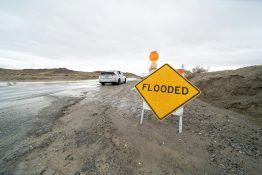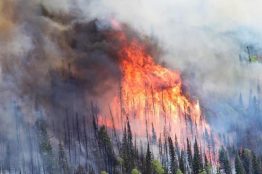The Cascadia Subduction Zone is a massive geologic fault that last ruptured in January 1700. But while this fault has stayed quiet for centuries, it regularly generates small tremors that accompany gradual, nondisruptive movement along the fault. The tiny tremor events and slow slippage are known collectively as “episodic tremor and slip.” Seismic waves associated with these tremor events are recorded and tracked by the UW’s Pacific Northwest Seismic Network.
Read more at UW News »El Niño shows us the true face of climate change
Though the El Niño period we’re in is natural and relatively predictable, its impacts on the global environment and economy have been significant — from sweltering heat in Australia to deep freezes across the southern U.S. El Niño may be giving us a glimpse of what’s to come if climate change is not soon curtailed.
Read more »Atmospheric Science’s Mike Wallace awarded 2024 Japan Prize
Mike Wallace, UW professor emeritus of atmospheric sciences, is a 2024 recipient of the Japan Prize. The prestigious award honors scientists and researchers worldwide for having contributed significantly to the peace and prosperity of humankind through achievements that have substantially advanced science and technology.
Read more »UW research helps California forest managers assess smoke hazards from prescribed burns
Across the American West, managers of fire-prone landscapes are increasingly setting small fires to prevent larger, more destructive ones. Commonly called prescribed burns, these targeted, controlled fires keep forests healthy by reducing the buildup of grasses, leaves, branches and other debris that can fuel larger wildfires and smoke out nearby communities. But smoke from prescribed burns also presents health risks. Today’s forest managers must ask themselves — how much prescribed burning is too much?
Read more at UW News »Shallow soda lakes show promise as cradles of life on Earth
Charles Darwin proposed that life could have emerged in a “warm little pond” with the right cocktail of chemicals and energy. A new study from the University of Washington reports that a shallow “soda lake” in western Canada shows promise for matching those requirements. The findings provide new support that life could have emerged from lakes on the early Earth, roughly 4 billion years ago.
Read more at UW News »





